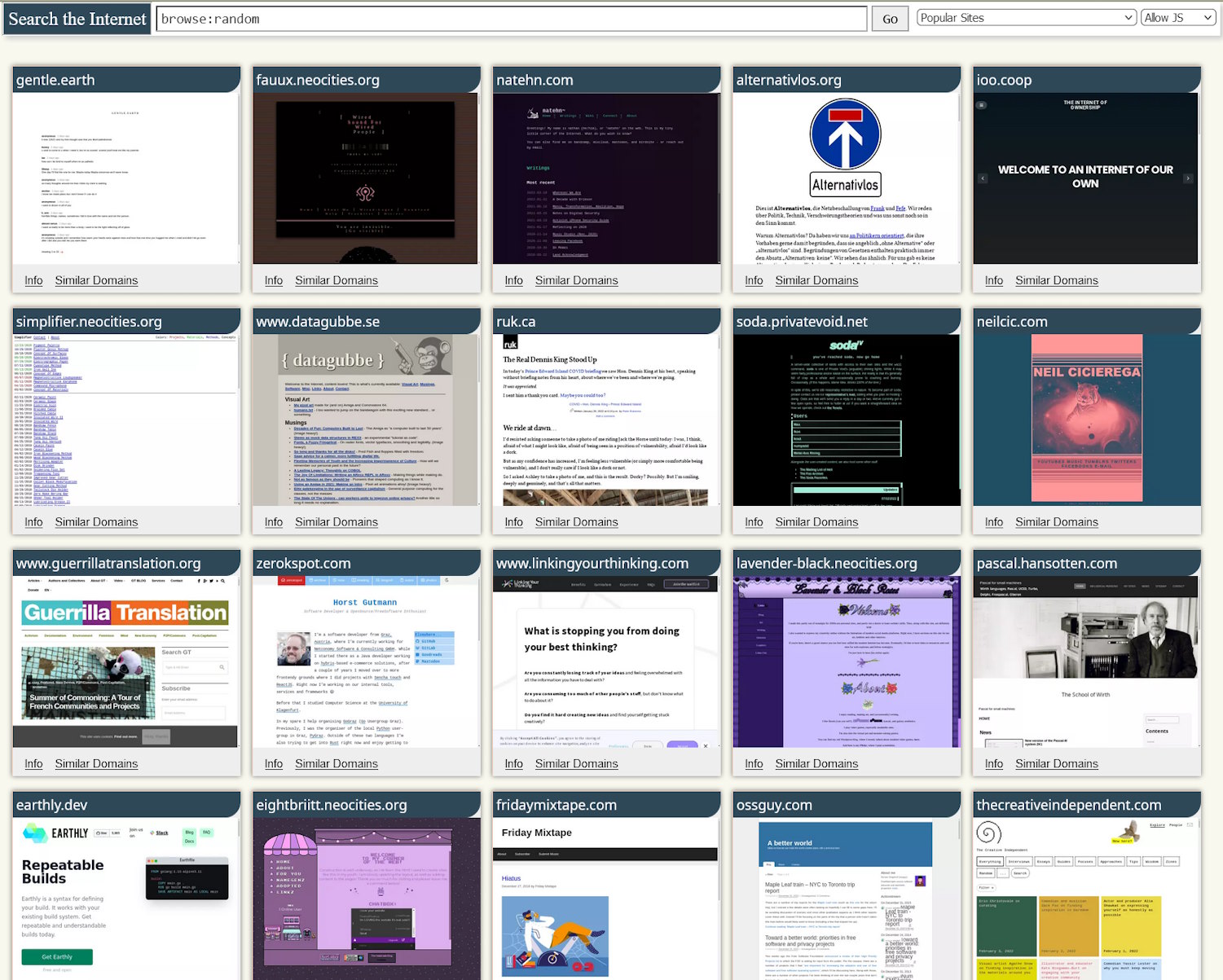The indieweb is all the rage, especially as we saw the large social media conglomerates, that once replaced it, start to crack. But what is the indieweb? And how do you get there? All this, and more, in this blogpost (on the indieweb I guess).
The indieweb - a web of good intentions
The indieweb describes the web of personal blogs, homepages about special interests made with love, and handcrafted personal web presences. You know, the stuff you think about when you think of the internet of the early to mid 2000s. Questionable use of HTML-styling, actual people behind every page, the only metric of engagement being a visitor counter that proudly presents a different randomly generated number on every page load. No corporations, no dark patterns, just people living in the moment.
Well… that’s the idea. Before I get all nostalgic again (>.>): The golden age of the personal internet was not all that golden all the time: Websites would disappear overnight, even internal links would 404, and on at least 10% of the websites I visited I wasn’t sure if the owner was still alive.
I remember that I once thought that the coolest thing about Facebook was that the profiles are looked alike and the information you needed (the relationship status of your highschool classmates of course), was always in the same place. Finally we had overcome individually designed profile pages and blinking “under construction” gifs! But even I was feeling that something had gone the wrong way when Google discontinued their RSS reader product. Believe it or not I wrote a blogpost about it back then. Yesterday, while checking the HTTP server logs, I came across it again, read it, and, while I was ready to be embarrassed for my 21 year-old self, it is surprisingly non-cringe. 1
Anyway, my view on the beauty of Facebook has changed.
We all make mistakes.
Nowadays I yearn for more personal websites, with their own domains and full control over the design (not that I am particularly expressive design-wise on here).
And many some other people think the same.
With a mixture of nostalgia, discontent and defiance against the major social media platforms, and an unshakable optimism for the small-/indieweb, these people are building the internet that they want to see.
Ok, convinced, so, where is this indieweb?
First – that’s great!
When you are reading these lines, you are actually already on the indieweb. Look up, it has it’s own domain (nowadays even with HTTPS, something that only banking websites had back in the day) and I am a person. And while I could host anything on here, I just write my little blog using the static blog engine hugo. And by writing these words about the software I use for blogging, I have actually just fulfilled the third requirement for an indie weblog.
But for real, I understand that finding these little gems is hard. With a busy working day, nobody has the time they had when they were 14 to aimlessly type in random domains and hope that they would resolve. Even Google results are not getting better with SEO gaming and web-scraped spam websites filling up the first result pages. And because it prefers well-known domains, small blog have a harder time standing out.
But we do have the technology: Specialized search engines are indexing personal websites, like searchmysite.net and marginalia.nu, help surface the internets’ (good) weirdness. I use them mainly for my own amusement instead of quests for information, but hey, maybe I should try that more often.
But the website that gets me back into the indieweb the fastest and most consistently, is indieblog.page – and it does this in two ways.
The most consistent is indieblogs daily RSS feed. Once per day a randomly chosen recent blogpost from one of the currently 3,442 blogs in their directory is added to this feed. I see them pop-up in my RSS feed reader, and surprisingly often it is something interesting, fun, or just plain human, which is kind of beautiful. Really, the fact that a human being with little to no ulterior motive wrote it can make a blogpost about someones new knitting project or a personal review of the year 2022 surprisingly wholesome.
The second, and a bit more ad-hoc, way, is it’s “Open Random Blog Post” button. The button is also on the landing page of the website, but I actually added it as a bookmark to the bookmarks toolbar that Firefox shows on an empty new tab. It’s simply a bookmark of https://indieblog.page/random. Whenever I notice that I am caught in a loop of opening the same 4 news websites within minutes just to notice that there is nothing new happening, I click this button as kind of a emergency exit for the corporate news net. And bam, I read about somebody hacking their bluetooth-toothbrush or how to get a computers hardware ID. And those are just my last two button clicks.
How to participate?
As you see, the indieweb has an undeniably techie-leaning slant. That’s not particularly surprising, given that there is talk about domain names, webhosting, and RSS syndication (really simple!).
But at https://indieweb.org/Getting_Started you can find very to follow steps for every skill level - you don’t have to be a web developer and blog about your blogging tech stack to be part of the indieweb! And if you start your blog because of this post, let me know! I’d be your first RSS subscriber for sure!
-
Or maybe I just didn’t develop at all since then. ↩︎
